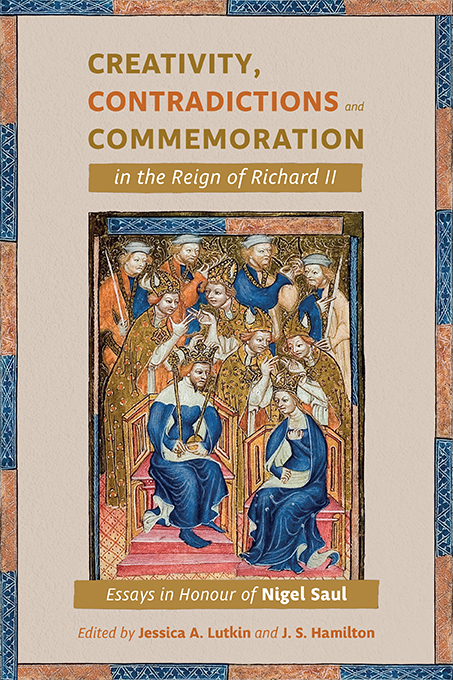 Creativity, Contradictions and Commemoration in the Reign of Richard II
Creativity, Contradictions and Commemoration in the Reign of Richard II 6 - Pardons for Self-Defence in the Reign of Richard II: The Use and Abuse of Legal Formulas
Published online by Cambridge University Press: 26 May 2022
Summary
One theme of this collection of essays in honour of Professor Nigel Saul is the study of sources, especially chronicles, but there are other sources that also present narratives of historical significance. As with chronicles, some may be more reliable than others. In studying homicides in late medieval England, records of cases involving claims of self-defence often include much fuller narratives than other homicide records, since making such a claim credible usually required putting forward a more detailed description of how the defendant was attacked and allegedly had to kill the attacker in order to save his (or rarely her) life.
Unfortunately, it has been recognised at least since the time of Naomi Hurnard's classic study The King's Pardon for Homicide before 1307 that many stories put forward to justify claims of self-defence included stylised expressions intended to fit the strictly defined circumstances that made a claim of self-defence legally acceptable. It is therefore necessary to distinguish between elements in the records that were formulaic and those that might actually be based on the real events behind the records. To make these distinctions, this study has examined as many as possible of the cases in the reign of Richard II (1377–99) in which pardons were granted on grounds of self-defence and information beyond the bare fact of the pardon could be found. In the Calendars of Patent Rolls for Richard's reign, about 240 cases were identified in which the king granted pardons for homicide on grounds of self-defence. Of these, significant additional information beyond the fact of the pardon has so far been found for about 180 of the cases, roughly three-fourths of the total. More data may be found, but this is already enough to distinguish patterns in the use of formulas in the self-defence narratives. In particular, it permits recognition of the differences in the use of formulas in the indictments (primarily made by coroners’ juries, though some were made before justices of the peace or other authorities) and the later verdicts in the same cases (primarily made by juries at trials at gaol delivery, though a few appeared elsewhere). In many cases, the later verdicts are significantly more formulaic than the indictments, which appear more likely to be closer to the underlying reality of the original events.
- Type
- Chapter
- Information
- Creativity, Contradictions and Commemoration in the Reign of Richard IIEssays in Honour of Nigel Saul, pp. 121 - 134Publisher: Boydell & BrewerPrint publication year: 2022


